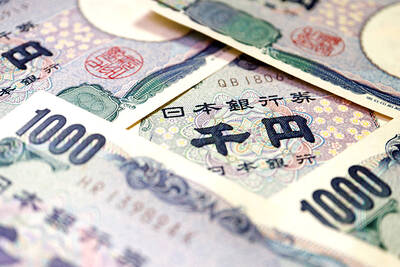Google Taiwan is betting on mobile Internet, with the recent explosive growth in netbooks and smartphones, the company said on Thursday.
The company said it placed a dedicated team in Taiwan to look after its free Android mobile Internet platform — in close proximity to the world’s largest PC and smartphone contract manufacturers — and capitalize on the mobile trend, which it thinks will last for at least 10 years.
Research by Strategy Analytics Inc shows that Google could overtake Microsoft Corp as the No. 1 mobile operating system provider — with more than 50 million plus Android platform units — by 2012.
When Android was first introduced in the second half of last year, less than 10 million units were downloaded. This year the number is expected to grow to around 15 million units.
Chien Lee-feng (簡立峰), general manager of Google Taiwan, believes that for domestic technology companies to come out ahead, they need to develop their own brands, rather than be controlled by brand name vendors. Chien cited Asustek Computer Inc (華碩電腦) and HTC Corp (宏達電) as examples.
Although the PC market is dominated by foreign companies, the netbook segment is 80 percent Taiwanese, which was a promising sign for local tech firms, Chien said at a press gathering in Taipei.
“Local original design manufacturers face razor-thin profit margins of 3 [percent] to 4 percent. We believe our free Android platform will give them more breathing room,” he said.
Following up on comments by Google chief executive Eric Schmidt, Chien said he truly believes the Internet will be a critical part of global economic recovery. The search giant makes its revenues from Web advertising via its search functions and YouTube.
Google Taiwan said revenue grew 59 percent last year and it was now the market leader in Internet video and online maps.
Google Taiwan had an arrival rate of 52 percent in 2006, but by last year it had increased to 80 percent. The arrival rate is calculated by estimating the percentage of users online during a set period of time who access a certain Web site.

GROWING OWINGS: While Luxembourg and China swapped the top three spots, the US continued to be the largest exposure for Taiwan for the 41st consecutive quarter The US remained the largest debtor nation to Taiwan’s banking sector for the 41st consecutive quarter at the end of September, after local banks’ exposure to the US market rose more than 2 percent from three months earlier, the central bank said. Exposure to the US increased to US$198.896 billion, up US$4.026 billion, or 2.07 percent, from US$194.87 billion in the previous quarter, data released by the central bank showed on Friday. Of the increase, about US$1.4 billion came from banks’ investments in securitized products and interbank loans in the US, while another US$2.6 billion stemmed from trust assets, including mutual funds,

AI TALENT: No financial details were released about the deal, in which top Groq executives, including its CEO, would join Nvidia to help advance the technology Nvidia Corp has agreed to a licensing deal with artificial intelligence (AI) start-up Groq, furthering its investments in companies connected to the AI boom and gaining the right to add a new type of technology to its products. The world’s largest publicly traded company has paid for the right to use Groq’s technology and is to integrate its chip design into future products. Some of the start-up’s executives are leaving to join Nvidia to help with that effort, the companies said. Groq would continue as an independent company with a new chief executive, it said on Wednesday in a post on its Web

RESPONSE: The Japanese Ministry of Finance might have to intervene in the currency markets should the yen keep weakening toward the 160 level against the US dollar Japan’s chief currency official yesterday sent a warning on recent foreign exchange moves, after the yen weakened against the US dollar following Friday last week’s Bank of Japan (BOJ) decision. “We’re seeing one-directional, sudden moves especially after last week’s monetary policy meeting, so I’m deeply concerned,” Japanese Vice Finance Minister for International Affairs Atsushi Mimura told reporters. “We’d like to take appropriate responses against excessive moves.” The central bank on Friday raised its benchmark interest rate to the highest in 30 years, but Bank of Japan Governor Kazuo Ueda chose to keep his options open rather than bolster the yen,

Even as the US is embarked on a bitter rivalry with China over the deployment of artificial intelligence (AI), Chinese technology is quietly making inroads into the US market. Despite considerable geopolitical tensions, Chinese open-source AI models are winning over a growing number of programmers and companies in the US. These are different from the closed generative AI models that have become household names — ChatGPT-maker OpenAI or Google’s Gemini — whose inner workings are fiercely protected. In contrast, “open” models offered by many Chinese rivals, from Alibaba (阿里巴巴) to DeepSeek (深度求索), allow programmers to customize parts of the software to suit their